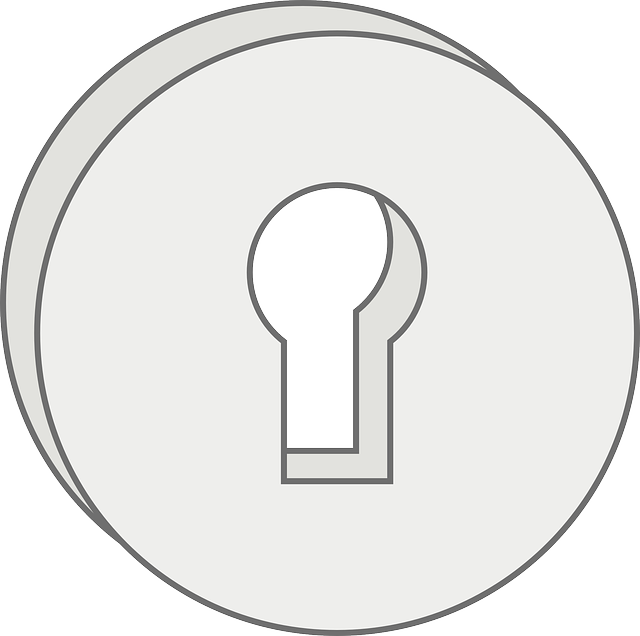When upgrading to an access control system like a smart lock or keyless door lock, it's vital to ensure compatibility with your existing infrastructure. These systems offer modern security solutions with features such as biometric scanning and mobile access, providing keyless entry and diverse authentication methods that cater to different security needs. Integration with home automation or broader security ecosystems is crucial for a seamless transition and ongoing operational efficiency. Advanced smart locks can be managed remotely, offer detailed activity logs, and adapt to future security demands without significant reconfiguration. They enhance both convenience and security by eliminating the risks of physical keys, and when selected with care, these systems can safeguard sensitive information and assets effectively. Organizations should consider system complexity, environmental durability for outdoor use, encryption strength, and biometric authentication options to choose an access control solution that aligns with their specific requirements and future-proofs their investment in security technology.
When safeguarding properties against unauthorized entry, selecting the right access control system becomes paramount. This article delves into the critical aspects of access control systems, exploring smart lock technologies and keyless door locks as the forefront of home and business security. We will navigate through the features and considerations that define robust security solutions, discuss integration with existing infrastructure, and offer expert advice to help you select the most suitable system for your specific needs. Join us as we unlock the path to securing your premises effectively with up-to-date insights on access control systems.
- Understanding the Essentials of Access Control Systems for Enhanced Security
- Evaluating Smart Lock Technologies: Key Features and Considerations
- Keyless Door Locks: The Future of Home and Business Security
- Integration and Compatibility: Ensuring Your Access Control System Fits Seamlessly with Existing Infrastructure
- Expert Recommendations: Selecting the Best Access Control System for Your Needs
Understanding the Essentials of Access Control Systems for Enhanced Security

When implementing an access control system, it’s crucial to assess your security needs and select a solution that aligns with your operational requirements. A smart lock, for instance, can provide keyless entry and advanced authentication methods, ensuring that only authorized individuals gain access. These systems often come equipped with features like biometric scanning, PIN codes, or mobile access, which can be tailored to the sensitivity of the areas they protect. It’s advisable to evaluate the reliability and robustness of the technology, considering factors such as the system’s integration capabilities with existing infrastructure and its compliance with industry standards for security and privacy. Additionally, the scalability of the smart lock system should be taken into account, allowing for future expansion or upgrades without significant overhauls. By carefully selecting an access control system that meets these criteria, organizations can significantly enhance their security posture and safeguard sensitive information and assets.
Evaluating Smart Lock Technologies: Key Features and Considerations

When evaluating smart lock technologies for access control systems, it’s crucial to consider the integration capabilities with existing security infrastructure. A smart lock should seamlessly connect with your property’s overall security framework, ensuring a cohesive and robust defense against unauthorized entry. The ability to integrate with various home automation ecosystems, such as smart home platforms, can enhance user convenience while maintaining security protocols. Additionally, the security features of a keyless door lock, including biometric authentication, encrypted access codes, and real-time activity logs, are paramount in ensuring that only authorized individuals can gain entry. These features not only bolster security but also provide valuable data for monitoring and managing who accesses your premises. Furthermore, the smart lock’s compatibility with mobile devices allows for remote management and monitoring, offering peace of mind whether you’re at home or away. It’s essential to select a model that aligns with both your security needs and the technological landscape of your property, ensuring that your access control system remains state-of-the-art and effective against evolving threats.
Keyless Door Locks: The Future of Home and Business Security

In the realm of home and business security, keyless door locks stand at the forefront of innovation, representing a significant advancement in access control technology. These smart locks offer unparalleled convenience and enhanced security features compared to traditional locking mechanisms. With the integration of biometric identifiers or unique digital codes, keyless door locks provide an additional layer of protection by eliminating the risk associated with lost or duplicated keys. The adoption of these systems can be tailored to a range of user needs, from simple passcode entry to sophisticated systems that integrate with smart home ecosystems, allowing for remote access and monitoring through mobile applications. This seamless integration ensures that users can control who enters their premises and when, all while maintaining an intuitive and user-friendly experience.
Choosing the right keyless door lock involves careful consideration of various factors, including compatibility with existing security systems, desired levels of encryption for code protection, and the type of biometric authentication—be it fingerprint or facial recognition—that aligns with the specific security protocols required. Additionally, it’s crucial to evaluate the durability and weather resistance of the lock if it will be deployed in an outdoor environment. These systems not only deter unauthorized access but also often come equipped with features such as real-time alerts and tamper detection capabilities, further fortifying home and business security. With the continuous evolution of smart lock technology, businesses and homeowners alike can leverage the latest advancements in access control to safeguard their properties effectively.
Integration and Compatibility: Ensuring Your Access Control System Fits Seamlessly with Existing Infrastructure

When integrating a new access control system into your existing infrastructure, it’s imperative to consider the compatibility and seamlessness with your current setup. A smart lock system, for instance, should be able to connect with your existing security measures and management software without causing disruptions. The process begins with an evaluation of the current hardware and software you have in place. Ensure that the access control solution can interface with your network infrastructure, as this will dictate the ease of integration and performance of the system. It’s crucial to opt for solutions that support open protocols, enabling them to communicate effectively with a variety of devices and systems, thus providing flexibility and future-proofing your investment in security technology. By selecting a keyless door lock system that aligns with your network’s capabilities, you can ensure a smooth transition and uninterrupted operation, enhancing both security and convenience within your premises.
Expert Recommendations: Selecting the Best Access Control System for Your Needs

When selecting an access control system, it’s crucial to consider the specific security needs and operational efficiency of your environment. Access control solutions range from basic keycard systems to sophisticated biometric smart locks, each offering varying levels of security and functionality. For instance, a keyless door lock with biometric capabilities can provide a higher level of security compared to one that relies solely on traditional keycards or passwords. In the context of high-security areas, such as data centers or research facilities, multi-factor authentication might be necessary, integrating both biometrics and smart cards for access. It’s advisable to work with a reputable provider who can assess your property’s unique requirements and recommend a system that aligns with your operational demands and budget constraints. This ensures that you not only meet your security objectives but also facilitate smooth day-to-day operations without unnecessary complications. Additionally, staying abreast of technological advancements in the realm of smart lock technology can offer future scalability options for your access control system, allowing for seamless upgrades as your needs evolve. Consider factors such as user convenience, system reliability, and integration with other security measures to make an informed decision on the best access control solution for your needs.
When securing premises with modern access control systems, the choice between traditional locks and advanced smart locks, including keyless door locks, is increasingly a question of functionality and convenience rather than mere security. This article has delved into the critical aspects of selecting an access control system that aligns with your specific needs, emphasizing the integration capabilities and future-proofing benefits of these technologies. As we’ve explored the features and considerations necessary for effective smart lock technologies, it becomes clear that the right access control solution can significantly enhance both security and ease of management. Expert recommendations underscore the importance of assessing compatibility with existing infrastructure and understanding the technical nuances of each system. By considering these factors, homeowners and businesses alike can confidently choose an access control system that offers unparalleled protection without compromising on accessibility or integration. In essence, the decision to implement a smart lock or keyless door lock represents a step towards a more secure and connected environment.
